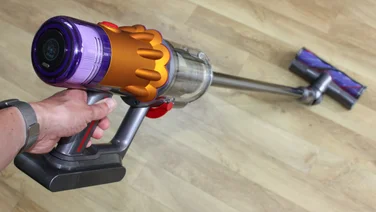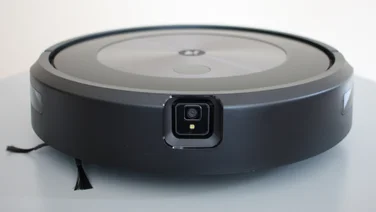To help us provide you with free impartial advice, we may earn a commission if you buy through links on our site. Learn more

Our taps do a lot for us, but they’re often an area we forget to clean until we notice a real difference. Unfortunately, taps and other areas where hard water flows are the most common breeding grounds for limescale. It’s important to clean your taps regularly, but limescale can be a tough old thing to get rid of, especially if it’s been allowed to build up.
But what exactly IS limescale, and more importantly, how do you go about removing it? We’ve put together a guide below that will walk you through the important things you need to know about keeping your taps squeaky clean.
READ NEXT: The best washing machines to buy today
What is hard water?
No, before the witty among you throw some guesses in, it isn’t ice.
Hard water is water that has a high mineral content – that is, water that’s had lots of contact with deposits of chalk or limestone. It’s believed that around 60% of us here in the UK live in a hard water area.
The reason it’s important when talking about limescale is because the extra minerals can leave behind residues that stain and damage certain surfaces and accelerate the build-up of limescale.
What is limescale?
Limescale is a hard and chalky substance that consists mainly of calcium carbonate, which happens to be the most common mineral found in hard water. In fact, limescale is left behind when hard water evaporates, which means it’s something that can be found building up in/on pipes, kettles, and just about anything else that carries water in our homes – including taps.
Why is limescale bad?
First off, limescale is unsightly. It’s an easy-to-spot grime that will make your bathroom areas look less shiny and more rusty, and make your house guests want to leave, never come back and spread nasty rumours about you only cleaning once a year.

Secondly, as it builds up, limescale only gets harder to clean. Catch it early, with the correct cleaning tools, and you won’t need much elbow grease. Let it build up and you’ll make your life all the more difficult when it comes to cleaning time.
Thirdly and perhaps most importantly, limescale can build up in our plumbing, causing obstruction and oxidation to take place. This can put pressure on our pipes and decrease their efficiency, as well as make them degrade quicker. According to British Water, only 1.6 mm of limescale on a heating element will decrease its efficiency by 12%.
READ NEXT: How to get rid of mould on walls permanently
How do I remove limescale from my taps?
You’ve probably heard all about limescale build-up in every overly dramatic cleaning advert ever broadcast on TV. Luckily, on the market today, you can find just about any cleaning product for any specific problem – and that includes limescale.
Option 1: Descalers
Our top recommendation for bog-standard descaling, Viakal gives you a lot of cleaning power without breaking the bank. Additionally, it comes in a spray bottle, which will make the cleaning how-to a lot easier. Application is nice and easy as all you have to do is spray to a culprit area and let it work for around 5 minutes. After that point, any limescale still around will be easy to wipe away and an anti-limescale film is even left over to prevent frequent deposits in future.
Another great option is Delphis, which provides a natural alternative to products like Viakal. This Eco Professional Limescale Cleaner is plant-based and is suitable for any tap or home appliance that needs descaling. Thanks to its natural formula that forgoes phosphates and ammonia, it may be a more comforting option for areas that are so close to your drinking water supplies.
For more descaling products that are more specific to toilets, pipes and washing machines, check out our round up of the best limescale cleaners.
Option 2: Tools
One handy tool and technique that’s proving popular makes use of either a small bag, or a cute little product called Limey. Limey is a small, balloon shaped object that fits on the end of your tap. Simply spray a few teaspoons worth of Viakal or Delphis inside Limey, secure it over the end of your tap, and leave it to deconstruct the limescale for around 20-30 minutes.
One extremely versatile tool that can help you descale a tap and clean various appliances around your home is a Sonic Scrubber. Sonic Scrubbers are handheld, electrical brushes that put in the elbow grease for you. If you’re having a hard time with a particular hard surface, or a tricky-to-get-to area, a Sonic Scrubber could give you the hand you need. Particularly useful when tackling harder limescale deposits, Sonic Scrubber also comes with multiple brush heads that will apply different pressure specific to your needs.






